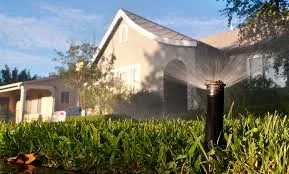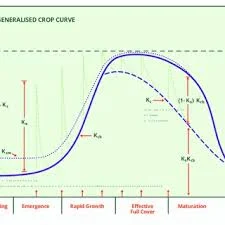Definition: Irrigation system water demand is the amount of water required to meet the evapotranspiration (ET) needs of the crop, considering the irrigation efficiency. In other words, it's the volume of water that needs to be applied to the crop zone after accounting for losses due to evaporation, deep drainage, and other factors.
The three factors crop coefficient (Kc), irrigation efficiency (Ei), and irrigation time period, all play a crucial role in determining irrigation water demand
Click the Translate button(see right) on this post to set your Own Language to understand more perfectly!!
Irrigation Calculator
Continue Definition:
Understanding Irrigation Management: Crop Coefficient, Irrigation Efficiency, and Irrigation Time Period
Crop Coefficient (Kc):
The crop coefficient (Kc) is a factor that accounts for the difference in water use between a specific crop and the reference crop (usually well-watered grass). It essentially tells you how much a particular crop transpires compared to the reference crop under the same conditions. Kc values vary depending on the crop type, growth stage, and climatic conditions. For example, corn will have a different Kc than tomatoes, and both will have varying Kc values throughout their growing seasons.
Example of various Crop Coefficient:
Here's a table listing crop coefficients (Kc) for various irrigation plants in general use. These are averages and can vary depending on the specific growth stage and climatic conditions. It's always recommended to consult local resources or agricultural extension services for the most accurate Kc values for your specific situation.
Crop Type Kc Range
Alfalfa1.10 - 1.25
Barley0.80 - 1.10
Corn0.80 - 1.10
Cotton0.80 - 1.20
Fruits (orchards)0.70 - 1.00
Grass (lawns)0.70 - 0.85
Peanuts0.80 - 1.10
Potatoes0.70 - 1.00
Rice1.00 - 1.20
Soybeans0.80 - 1.10
Sugarcane1.20 - 1.40
Tomatoes0.70 - 1.10
Vegetables (general)0.70 - 1.00
Wheat0.80 - 1.10
Remember, these are just a general guide. For the most accurate Kc values for your specific crop and location, consult with local agricultural resources or extension services. They can provide Kc data specific to your region and crop variety.
Irrigation Efficiency (Ei):
Irrigation efficiency represents the percentage of irrigation water that reaches the plant root zone for beneficial use by the crop. Unfortunately, some water is lost during the irrigation process due to factors like evaporation, wind drift, runoff, or deep drainage beyond the root zone. A higher irrigation efficiency signifies less water waste. Different irrigation methods have varying efficiencies, with drip irrigation being generally the most efficient, followed by sprinkler and surface irrigation methods.
Irrigation Time Period:
The irrigation time period refers to the interval between irrigation events. It's determined by the crop's water needs, soil moisture capacity, and climatic conditions (mainly temperature, humidity, and wind speed) that affect evapotranspiration (ET). ET is the combined process of evaporation from the soil surface and transpiration from the plant. By monitoring soil moisture or relying on ET data, farmers can determine the appropriate time period between irrigations to ensure adequate water supply for the crop without overwatering.
Calculating Irrigation Water Demand:
The following equation helps estimate the total water demand (ETc) for your crop over a specific period:
ETc = ETo x Kc x Time Period
where:
ETc - Crop Evapotranspiration (total water demand in mm or inches)
ETo - Reference Evapotranspiration (data typically available from weather stations or calculated using various methods)
Kc - Crop Coefficient (specific to your crop and growth stage)
Time Period - The time interval between irrigations (days)
Daily or Cycle Demand:
To determine the daily or cycle water demand, simply divide the total water demand (ETc) by the number of days (or cycles) in your irrigation time period.
Putting it All Together:
By understanding crop coefficient, irrigation efficiency, and irrigation time period, farmers can create an efficient irrigation plan. They can use the equation above to estimate the total water needs of their crop and then adjust for irrigation efficiency to determine the amount of water to apply. Monitoring soil moisture or relying on ET data helps determine the appropriate irrigation time period to ensure the crop receives water when needed without wasting water.
Example:
Imagine you're growing corn during a period with an average daily ETo of 5 mm and a Kc value for corn at that stage is 0.8. If you're using a drip irrigation system with an efficiency of 85%, and your soil conditions allow for irrigations every 3 days, here's how to calculate your irrigation needs:
Total Water Demand (ETc) for 3 days:
ETc = 5 mm/day x 0.8 x 3 days = 12 mm
Water to Apply Considering Efficiency:
Water Needed = ETc / Irrigation Efficiency
Water Needed = 12 mm / 0.85 = 14.1 mm
Therefore, you would need to apply approximately 14.1 mm of water through your drip system every 3 days to meet the crop's water needs during this period.
Remember, these are estimations, and real-world conditions can vary. Monitoring soil moisture and adjusting irrigation practices as needed is crucial for optimal water management.
How can we utilize the knowledge of Irrigation calculator to Earn Money in real life??????
The knowledge of irrigation calculators can be a valuable tool in several ways to generate income:
Direct Services:
Irrigation Consulting: You can leverage your knowledge of irrigation systems and water management to offer consulting services to farmers, landscapers, or homeowners.
This could involve:
Designing irrigation systems: Analyze a client's property, soil type, and crop needs to design an efficient irrigation system that minimizes water waste.
Creating irrigation schedules: Utilize irrigation calculators and local weather data to create customized irrigation schedules for clients, ensuring their crops receive the right amount of water at the right time.
Troubleshooting irrigation problems: Help diagnose and solve irrigation system issues clients might be facing, like uneven watering, low pressure, or clogged emitters.
Smart Irrigation System Installation: With the growing popularity of smart irrigation systems, you can specialize in their installation and setup.
This could involve:
Installing sensors and controllers for smart irrigation systems.
Programming the systems based on local climate data, crop needs, and soil moisture levels.
Providing training and support to clients on using their smart irrigation systems effectively.
Indirect Services:
Improving Crop Yields: By optimizing irrigation practices based on irrigation calculator data, you can help farmers and growers achieve higher crop yields. This translates to increased profits for them and potential recurring business for you.
Water Conservation Advocacy: Educate communities and businesses about the importance of water conservation in agriculture. You can use irrigation calculator data to demonstrate the impact of efficient irrigation practices on water savings.
This knowledge can be valuable for:
Promoting water-saving irrigation technologies and practices.
Developing educational programs on sustainable water management in agriculture.
Consulting with municipalities or water districts on water conservation strategies.
Content Creation: Share your irrigation expertise by creating valuable content online:
Develop a blog or YouTube channel offering tips and tricks on using irrigation calculators effectively.
Create online courses teaching people how to design their own irrigation systems or optimize their watering practices.
Sell downloadable resources like irrigation system planning templates or crop-specific irrigation schedules.
By applying your knowledge of irrigation calculators in these ways, you can turn it into a source of income through direct services, improved client outcomes, or educational content creation.
Do YOU Want To Earn Money In Various Ways, Click The Link & Explore Your Field of Interest!!!










No comments:
Post a Comment